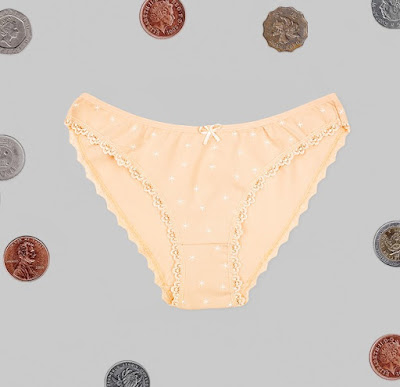#7 Common Yeast Infection Causes

Yeast infections are not fun. In fact, if you've ever had one, you can attest to how straight-up miserable they are.
The itchy, irritating infection happens when there's an overgrowth of Candida albicans, a naturally occurring yeast in the vagina. Sadly, most women will have a yeast infection at some point in their lives (many will have more than one). That's because the vagina's ecosystem is delicate, and anything that affects the balance of bacteria, which keeps yeast levels in check, can allow the fungus to take over.
You're probably not going to avoid a yeast infection forever, but here are the top seven things that cause them and what you can do to limit your chances of getting one.
1. Antibiotics
Antibiotics kill bacteria, but unfortunately, you can't choose with 100 percent accuracy which bacteria they target in the body. "There's 15 to 20 different types of bacteria in the vagina," Michael Cackovic, M.D., an ob/gyn at Ohio State Wexner Medical Center, tells OAJIBOLA. "If you're taking an antibiotic for a sickness or skin infection elsewhere, some of those [vaginal] bacteria are going to be susceptible, too." When it knocks out some of the good bacteria in the vagina, yeast can overgrow and cause an infection. One way to combat this is to ask your doctor about taking a probiotic at the same time, to preserve your populations of helpful bacteria.
2. Sitting in a wet bathing suit or sweaty gym clothes
Yeast loves anything that's warm and wet, hence why it's found a nice home in your vagina in the first place. "Anything you do down there that keeps it hot and wet, like wearing a wet bathing suit, is going to create an environment that loves to hatch yeast," Cackovic says. This also means it's not a great idea to stay in your sweaty gym clothes for hours after your workout. Cackovic recommends, if you're planning to get super sweaty, to wear sport underwear that's made of wicking material like polyester. It'll help pull the moisture away from your skin and keep the whole area drier. (For day-to-day wear, gynos typically recommend cotton underwear because it's the most breathable fabric, but it can get soggy when you're seriously sweating.)
3. Irritating bath products or laundry detergent
Using a new body wash or laundry detergent, especially one with fragrance, can disturb the pH of your vagina and cause irritation or a yeast infection. But even if you don't get a yeast infection right away, Cackovic says he often sees a domino effect that can lead to one indirectly. A new detergent can cause irritation or a skin condition called dermatitis, which in turn causes itchiness and redness. Those symptoms can easily be misdiagnosed as an infection, for which you might be prescribed an antibiotic. With no "bad" bacteria to kill, the antibiotic can kill off the good ones, leading to a yeast infection that could have been avoided. This can lead to bad smell down there👇🏼
4. High estrogen levels
"Yeast infections appear to occur more often in the setting of increased estrogen levels, such as with oral contraceptive use (especially when the estrogen dose is high), pregnancy, and estrogen therapy," Cackovic says. That's because excess estrogen increases glycogen (a stored form of glucose) levels in the vagina and glycogen promotes yeast growth. Cackovic notes, though, that most birth control pills are monophasic, meaning the hormone doses are the same throughout one pack, and therefore shouldn't cause a big enough change to spark an infection.
5. Douching, or otherwise over-cleaning your vagina
Doctors advise strongly against douching, which involves cleaning the inside of the vagina with a squirt bottle filled with water or other fluids. Douching, especially with a solution that contains vinegar, iodine, or another cleaning agent, can seriously disrupt the normal pH of the vagina and cause overgrowth of yeast or harmful bacteria. To avoid changing the natural environment or causing irritation, doctors also don't recommend cleaning inside the vagina with soap. "Never put soap in the vagina," Tami Rowen, M.D., an ob/gyn at UCSF Medical Center specializing in sexual health concerns, tells OAJIBOLA. "It's like washing your mouth out with soap." Instead, simply rinse the area around the vulva with warm water while showering. If you don't interrupt the ecosystem, the bacteria and yeast will stay balanced on their own. They don't call it a self-cleaning oven for nothing.
6. Diabetes
Diabetics have a higher risk of getting yeast infections, especially if they have trouble managing their blood sugar levels. Higher blood glucose levels feed yeast, leading to overgrowth in any warm, moist areas of the body, especially the vagina.
7. Lube or spermicide
Some people are sensitive to certain types of lubes. "Some, especially glycerin-based, have sugar in them," Rowen explains, which can prompt yeast growth. Same goes with flavored or warming lube, which not only may contain sugar, but also irritating chemicals. Some women may have problems with silicone-based lube—it lasts longer, "which is great but it's going to cause more of a change in the vaginal environment," Rowen explains. She recommends sticking to water-based lube without glycerin if you're prone to yeast infections. Using a spermicide or condoms that contain it can also cause yeast infections in some women. Nonoxynol-9, the active ingredient in most spermicides, kills sperm and germs but can be irritating and kill good bacteria, too.



Comments
Post a Comment